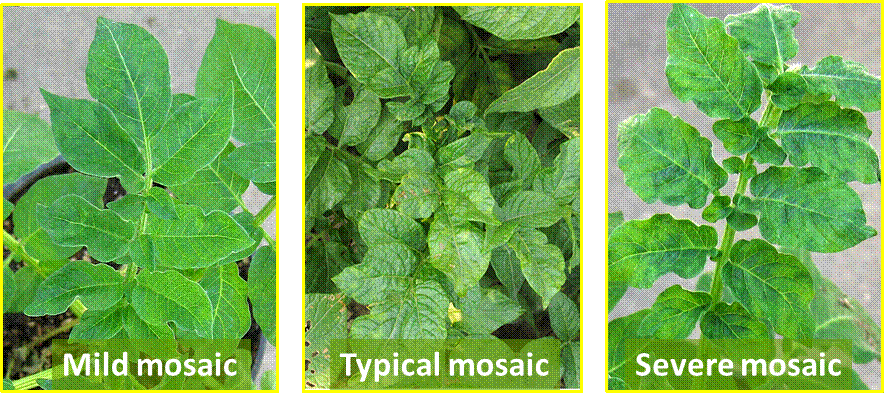Certified seed potatoes – more organic growers needed!
Those of you who are participating in our variety trials will know that we had some problems this year with a batch of certified seed potatoes. We always purchase certified seed potatoes for our “check” varieties, the commercially available varieties that we use as comparisons to the heirloom and specialty varieties we are testing. Using certified seed potatoes gives us a degree of confidence that viral and other diseases will be at low levels in the seed potatoes and that we will not have any varietal mixtures. Certified seed from Wisconsin should have virus incidence levels below 5%, thresholds for seed potatoes produced in some other states are higher.
Where possible, we source seed potatoes that are certified organic, as well as certified for seed quality. This year, we bought organic French Fingerling seed potatoes from an out-of-state seed farm. Out of 40 seed pieces planted, 36 emerged, and they looked bad – stunted, with mottled, crinkly leaves – typical signs of a viral infection. I tested each plant for the most common damaging potato virus, Potato Virus Y (PVY), and sure enough – 32 out of 26 plants were infected.

So, those plants are now gone from our field. We enjoyed the few potatoes that had already formed – there’s no risk to eating virus-infected potatoes – and we hope that not too much virus has been transferred from the infected plants to the rest of the varieties by aphids. Since we will be using some of the harvest for next year’s seed potatoes, we’re planning on testing samples of harvested tubers. At least some of the varieties planted, such as Aylesbury Gold and some of our own crosses, are PVY resistant, so they should be PVY-free.
However, the question remains – how did this happen? Certified seed potato crops are inspected for disease symptoms several times in the growing season and at harvest, and a sample of the tubers are grown out in a warm climate over the winter to check for late season infections that might not be noticed as plants die back. Since a sample (usually 400 tubers) is collected for the winter test by the grower, it is possible that the sample will not be representative of the whole crop. Mix-ups in storage are also a possibility, since separate plantings of the same variety are inspected separately for certification purposes. Neither of these possibilities seems very likely, however, given the extremely high virus level in our sample. Another possibility is simply that the viral symptoms were missed by the inspectors. Different potato varieties all have their own characteristic appearance – height, leaf shape, leaf and stem color, etc. If the inspectors haven’t encountered French Fingerling much before – since it is a specialty variety – they may have mistaken the stunting and crinkled leaves for its normal appearance.

We will be contacting the seed grower and the certifying agency, who hopefully can give us some answers. My main take away thought from this has been that we need more organic seed potato producers, in more regions of the US. Right now there are only a handful of organic seed potato growers – so problems at one of those farms can mean a shortage, or even an absence of organic seed potatoes for one or more varieties. Growing certified seed potatoes involves some extra management and care, but the market is there, and undersupplied. So – who wants to give it a try?
This article was posted in Blog Posts, Research News and tagged certified seed potatoes, organic seed potatoes, potato variety trials, potato virus Y.